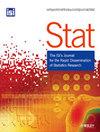A note about why deep learning is deep: A discontinuous approximation perspective
IF 0.8
4区 数学
Q3 STATISTICS & PROBABILITY
引用次数: 0
Abstract
Deep learning has achieved unprecedented success in recent years. This approach essentially uses the composition of nonlinear functions to model the complex relationship between input features and output labels. However, a comprehensive theoretical understanding of why the hierarchical layered structure can exhibit superior expressive power is still lacking. In this paper, we provide an explanation for this phenomenon by measuring the approximation efficiency of neural networks with respect to discontinuous target functions. We focus on deep neural networks with rectified linear unit (ReLU) activation functions. We find that to achieve the same degree of approximation accuracy, the number of neurons required by a single‐hidden‐layer (SHL) network is exponentially greater than that required by a multi‐hidden‐layer (MHL) network. In practice, discontinuous points tend to contain highly valuable information (i.e., edges in image classification). We argue that this may be a very important reason accounting for the impressive performance of deep neural networks. We validate our theory in extensive experiments.深度学习为什么是深度学习?非连续逼近的视角
近年来,深度学习取得了前所未有的成功。这种方法本质上是利用非线性函数的组成来模拟输入特征和输出标签之间的复杂关系。然而,对于分层分层结构为何能表现出卓越的表现力,目前还缺乏全面的理论认识。在本文中,我们通过测量神经网络对不连续目标函数的逼近效率来解释这一现象。我们重点研究了具有整流线性单元(ReLU)激活函数的深度神经网络。我们发现,要达到相同程度的逼近精度,单隐藏层(SHL)网络所需的神经元数量呈指数级增长,而多隐藏层(MHL)网络所需的神经元数量则呈指数级增长。实际上,不连续的点往往包含非常有价值的信息(即图像分类中的边缘)。我们认为,这可能是深度神经网络取得惊人性能的一个非常重要的原因。我们在大量实验中验证了我们的理论。
本文章由计算机程序翻译,如有差异,请以英文原文为准。
求助全文
约1分钟内获得全文
求助全文
来源期刊

Stat
Decision Sciences-Statistics, Probability and Uncertainty
CiteScore
1.10
自引率
0.00%
发文量
85
期刊介绍:
Stat is an innovative electronic journal for the rapid publication of novel and topical research results, publishing compact articles of the highest quality in all areas of statistical endeavour. Its purpose is to provide a means of rapid sharing of important new theoretical, methodological and applied research. Stat is a joint venture between the International Statistical Institute and Wiley-Blackwell.
Stat is characterised by:
• Speed - a high-quality review process that aims to reach a decision within 20 days of submission.
• Concision - a maximum article length of 10 pages of text, not including references.
• Supporting materials - inclusion of electronic supporting materials including graphs, video, software, data and images.
• Scope - addresses all areas of statistics and interdisciplinary areas.
Stat is a scientific journal for the international community of statisticians and researchers and practitioners in allied quantitative disciplines.
 求助内容:
求助内容: 应助结果提醒方式:
应助结果提醒方式:


